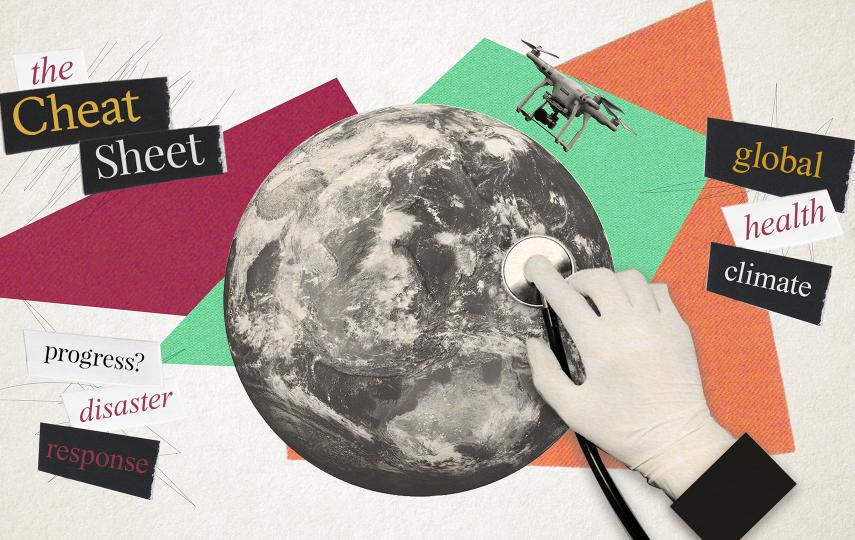"Its main characteristic is that it occurs in extremely big numbers," Clive Elliot told IRIN. This retired quelea expert spent the better part of his 31-year career at the UN Food and Agriculture Organization (FAO) trying to help farmers and governments in Africa cope with the pest.
Nomadic super-colonies can grow to millions of birds, making quelea not only the most abundant bird in the world but also the most destructive.
Small bird, HUGE damage
Although they prefer the seeds of wild grasses to those of cultivated crops, their huge numbers make them a constant threat to fields of sorghum, wheat, barley, millet and rice.
The average quelea bird eats around 10 grams of grain per day - roughly half its body weight - so a flock of two million can devour as much as 20 tons of grain in a single day.
With an estimated adult breeding population of at least 1.5 billion, FAO estimates the agricultural losses attributable to the quelea in excess of US$50 million annually.
Irrepressible
Quelea populations are notoriously robust; millions of birds are killed every year, but "reducing their numbers is highly problematic - they are highly mobile, have few natural predators and breed extremely fast. Man has been unable to make a serious impact despite the arsenal of weapons available," Elliot said.
"A new population can swiftly move into an area you just killed out ... [and] because they breed three times per year, with an average of three eggs per clutch, one pair of quelea birds can produce up to nine offspring annually."
|
Photo: Wikimedia Commons |
| Quelea quelea distribution |
Intensive farming and an increase in cereal crop production throughout the continent resulted in an explosion in their numbers; according to some estimates quelea populations have increased anywhere from 10 to 100 times since the 1970s.
Since the beginning of 2009 relief agencies in Africa have reported quelea bird swarms with a direct impact on food security in Kenya in January, in Zimbabwe in April, in Malawi and Tanzania in May, in Mozambique, Tanzania and Zimbabwe in June, and in Namibia and Tanzania in July.
It is difficult to invest in national eradication programmes because flocks have no respect for national boundaries, and "The destruction is patchy - at a national level a country loses only up to 5 percent [of crops], but for the individual farmer whose entire crop is wiped out that is little comfort," Elliot commented.
Beyond control
The most common way of controlling the pest is by large-scale spraying of infested areas, "usually with a chemical called Fenthion - also known as quelea-tox - where they breed or roost" said Elliot.
"Another way is blowing them up - finding places where they concentrate and using fire bombs or dynamite." In some areas the use of flamethrowers on roosts had also been tried, but with little success.
According to the Natural Resources Institute, a UK-based development group, some 170 control operations are executed in South Africa each year, killing 50 million birds on average.
|
Photo: Wikimedia commons |
| Quelea flocks can consist of the thousands of individual birds |
Most small-scale farmers have no access to aircraft, fuel, chemicals, dynamite or flamethrowers, and have instead relied on age-old traditional methods that are more effective, and certainly more environmentally friendly, but hugely time-consuming.
"The traditional way of control is mainly through bird-scaring. People go into the fields when their grain crop is vulnerable, using anything from catapults to banging and noisemaking - quite effective in the majority of cases," Elliot noted.
"One person can protect a hectare but it's very hard work," because the crops are vulnerable from dawn until dusk and could need protection for a whole month, he said.
If you can't beat them, eat them
More recent discussions about quelea bird pest control have turned towards predicting breeding based on weather patterns, deterrence mechanisms like netting, boosting natural predators, and even the development of a quelea virus.
Harvesting the birds as a natural resource might mean "two birds with one stone", Elliot suggested. "We have been trying to develop systems to catch the birds and turn them into food for people - they would make a great source of protein."
tdm/he
This article was produced by IRIN News while it was part of the United Nations Office for the Coordination of Humanitarian Affairs. Please send queries on copyright or liability to the UN. For more information: https://shop.un.org/rights-permissions





